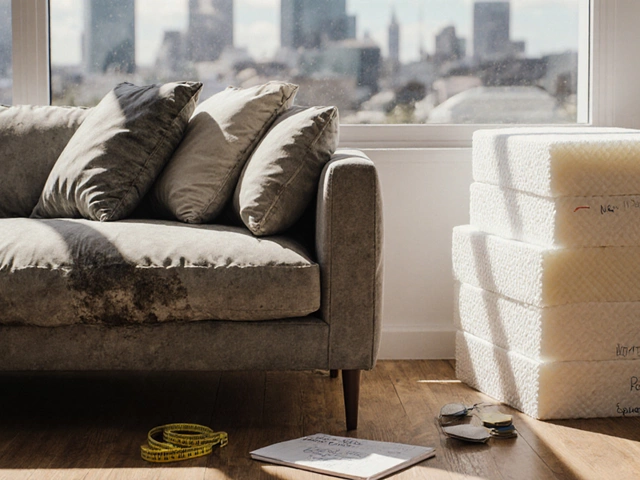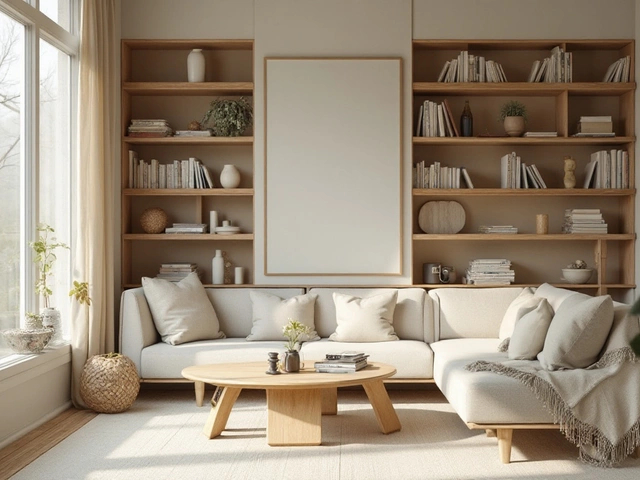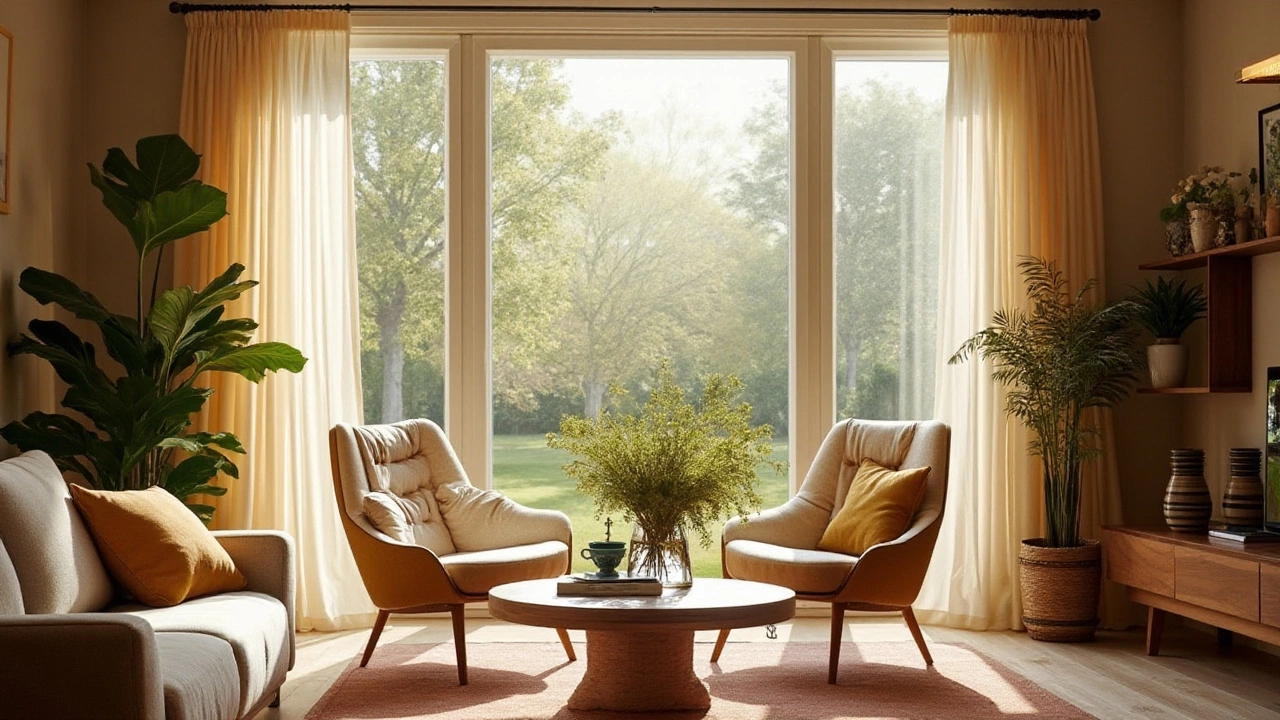
Once the darling of home decorators and DIY enthusiasts alike, blinds are now experiencing a wane in popularity. It's an interesting trend, especially considering how ubiquitous they once were, adorning the windows of nearly every home and office. Their neat lines and functionality made them a go-to choice for those who sought simplicity and ease. However, like many things, home design preferences evolve, and blinds are being cast in the shadow of newer, trendier alternatives.
The move away from blinds doesn't just reflect a change in aesthetic tastes; it also signifies a broader shift towards more eco-friendly and technologically advanced options. Individuals desire more from their home decor—not just style, but sustainability and smart functionality too. This shift is encouraging the exploration of curtains and other window treatments that better align with today's varied needs. So what does that mean for those attached to their blinds, and what alternatives should they consider? As we delve into this change, let's uncover the reasons behind the blinds’ decline and what might just rise in their place.
- The Rise and Fall of Blinds
- Emerging Window Treatment Trends
- Environmental Considerations
- Choosing the Right Covering for Your Home
The Rise and Fall of Blinds
Blinds have long been a symbol of modern convenience, offering a mix of functionality and simplicity that appealed to homeowners across the globe. Introduced as a practical solution for privacy and light control, they quickly became a staple. During their peak, blinds transformed from basic models into diverse styles, including Venetian, vertical, and roller blinds, catering to various aesthetic preferences and budgets. This versatility made them an attractive choice for many.
The humble blinds became prominent in the mid-20th century as modern architectural designs called for minimalist window treatments. Large glass windows in urban apartments and office buildings required coverings that wouldn't obstruct views or clash with streamlined designs. Blinds perfectly fit the bill, offering a clean look. As materials evolved from heavy metals to lightweight plastics and fabrics, their appeal increased, both for ease of installation and maintenance.
One striking facet of blinds was their efficiency in controlling light. They offered varying degrees of filtration and never consumed floor space, unlike curtains, which sometimes crowded rooms. However, as with many fashion staples, their allure has waned. The reasons are multifaceted, ranging from aesthetic shifts to technological advances. In recent years, interior design has trended towards softer, more organic materials, causing a notable shift towards curtains and other fabric-based coverings.
"Design evolves with our lifestyles," noted interior designer Abigail Ahern in a recent interview. "We want homes that reflect nature, comfort, and sustainability, which sometimes means moving away from what was once considered modern."
The environmental impact of blinds, typically constructed from non-recyclable materials, has also become a critical factor. With increasing awareness and demand for sustainable products, the home decor industry has moved towards eco-friendlier options. This trend has led to blinds being edged out by alternatives that promise both style and a smaller carbon footprint. Smart home technology, while a boon to many aspects of home life, has also played a role. Motorized curtains and blinds now offer seamless integration with home automation systems—a feature traditional manual blinds can't compete with.
Reflecting on market data, it's clear that this transition isn't a sudden one. A survey from the Home Fashion Market Insights showed a 20% decline in blind sales from 2019 to 2023, while curtain sales grew by 30% during the same period. This shift underscores a marked change in consumer preferences, showing a movement towards materials that offer both aesthetic and practical benefits. It signifies a broader lifestyle trend towards personalizing spaces with deeper textures and richer materials.
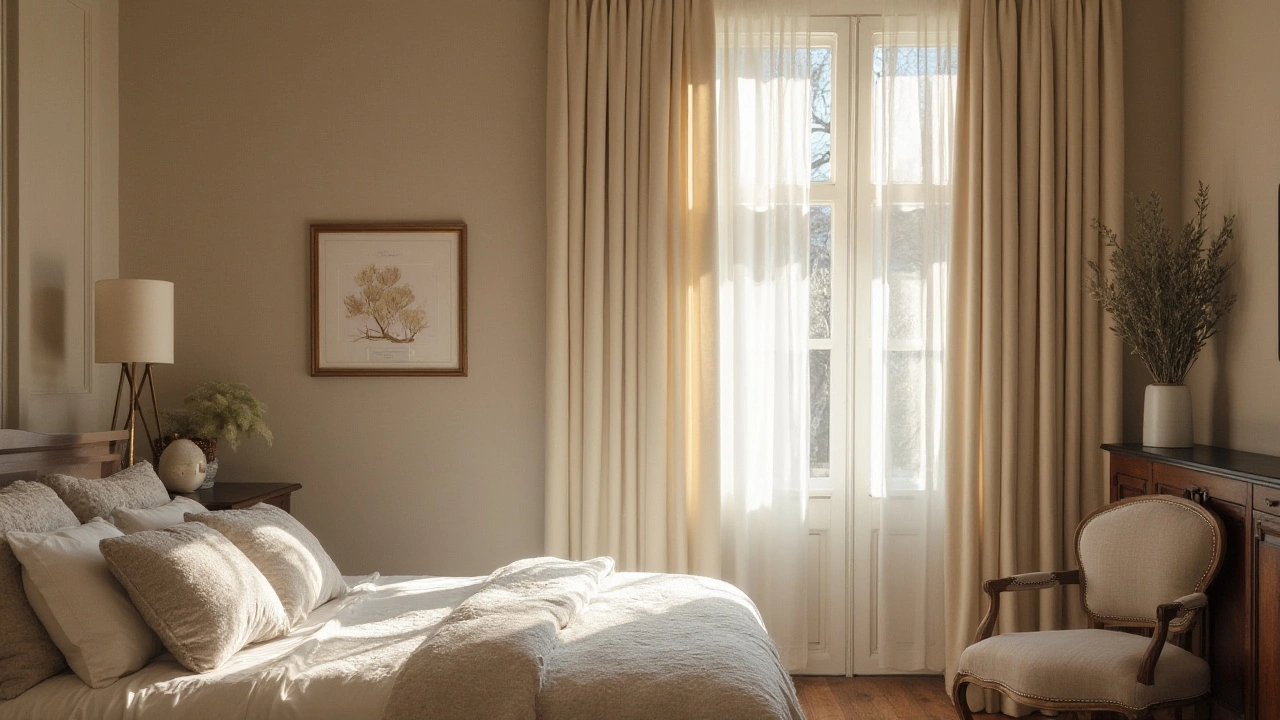
Emerging Window Treatment Trends
In recent years, the world of window treatments has expanded dramatically, as homeowners seek innovative ways to enhance both the functionality and aesthetic appeal of their spaces. One of the prominent trends we're witnessing is the move towards more sustainable and natural materials. With an increasing awareness of environmental issues, consumers are opting for materials like bamboo and organic cotton in their curtains and blinds. This shift not only supports eco-friendly practices but also brings a touch of warmth and nature into the home, creating a serene and inviting ambiance. These natural fibers have unique textures that add a layer of depth, making rooms feel cozy and personalized.
Technological advancements are also playing a pivotal role in shaping window coverings. Smart blinds and curtains that can be operated via smartphone apps or integrated into home automation systems are gaining popularity. This trend ensures convenient control over privacy and light, adaptable to any user's preference from anywhere at any time. Imagine waking up and opening your blinds with a simple voice command or setting a routine to close the curtains at sundown automatically. This is particularly appealing to tech-savvy individuals seeking to simplify their home environment while enjoying modern comforts. A report from the Smart Home Group suggested, "Smart home integration for window treatments is set to increase by 30% over the next five years, reflecting a major shift in consumer priorities."
Another growing trend is the return to opulence and grandeur in curtain designs. Homeowners are now embracing luxurious fabrics such as velvet and silk, accompanied by ornate drapery hardware, to make bold style statements. This contrasts starkly with the minimalist look that dominated the past decade. Embellishments like tassels, fringes, and rich patterns are coming back to dress windows in ways that exude personality and sophistication. Layering multiple types of fabrics is another technique gaining traction, allowing for both practical benefits such as insulation and a more dynamic visual effect.
In terms of color, there's a noticeable shift towards bolder, more daring hues. Where once neutral colors reigned supreme, now jewel tones and deep shades are making waves, setting the mood and tone of rooms. Rich greens, blues, and terracottas can transform spaces into vivid living areas that are as expressive as they are fashionable. This color play doesn't just apply to the fabrics themselves but also to the hardware, where metallic finishes such as brass or copper are used to complement the fabric hues, adding an extra layer of richness.
For those who prefer a more understated look, the trend of 'barely-there' curtains is perfect. Sheer fabrics that allow natural light to filter gently into the room are being favored for their ability to soften the ambiance without sacrificing privacy. These lightweight materials can make a room feel airy and open while maintaining a sense of intimacy when needed. This option works beautifully in spaces such as home offices or reading nooks, where soft lighting enhances focus and relaxation.
Looking into the future of home decor, it's clear that window treatments are no longer just a functional element but a key piece of the design puzzle. By combining aesthetics with innovation, these trends ensure that modern homes can achieve the perfect balance of style, comfort, and practicality. As new materials and technologies continue to emerge, the possibilities for personalizing window treatments will only expand, offering even more creative freedom to homeowners.
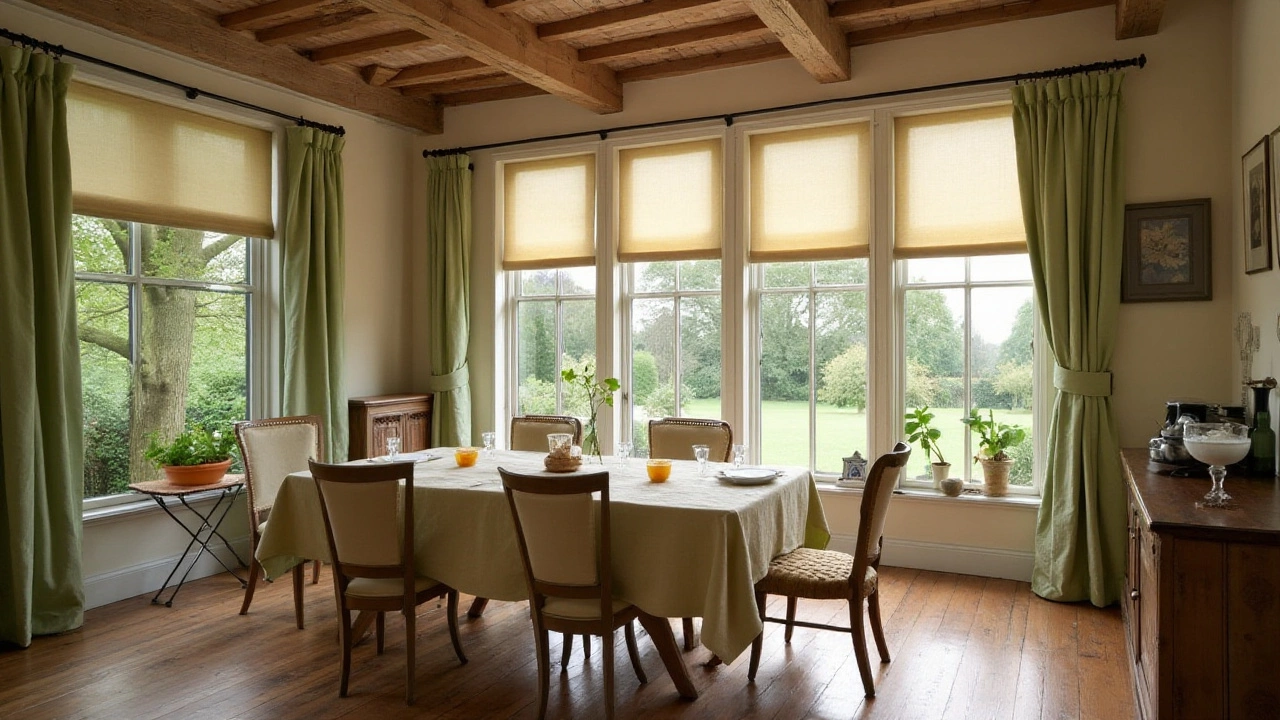
Environmental Considerations
When it comes to selecting window coverings, many homeowners are now placing a greater emphasis on environmental considerations. The push towards sustainability has transformed how we think about everything from fashion to food, and home decor is no exception. Blinds have long been criticized for their materials and production processes, which often involve plastics or metals that are difficult to recycle and contribute to landfill waste once discarded. As awareness of these environmental impacts grows, consumers are looking for greener alternatives that minimize harm to our planet.
One of the key reasons behind the shift away from blinds toward more environmentally friendly options has been the rise of natural fibers. Materials like cotton, linen, and bamboo used in curtains not only add a soft, organic touch to a space but also boast a lower environmental footprint. These materials are renewable and biodegradable, qualities that align well with sustainable living goals. Moreover, manufacturing processes for natural fiber products often consume less energy and produce fewer emissions, making them an attractive choice for eco-conscious individuals.
"Sustainability is at the heart of modern design and decor," suggests Timothy Clarkson, an environmental architecture expert. "Consumers now recognize the impact their choices have on the planet, and they’re eager to invest in solutions that don’t come at the Earth’s expense."
Beyond the materials themselves, the functionality of window coverings plays a significant role in energy conservation. Properly selected and installed window treatments can enhance a home's energy efficiency by insulating windows, thus reducing the need for heating and cooling. While standard blinds can offer basic control over light and privacy, they often fall short in the insulation department. More heavily structured fabrics or layered curtain systems trap air effectively and help maintain a stable indoor climate, which can translate to lower energy bills and reduced energy consumption.
Sustainable Production Methods
Another critical aspect of environmental impact is the production process itself. Traditional blind manufacturing has been known to involve chemicals and processes that are not always eco-friendly. In contrast, many modern curtain producers are adopting sustainable practices, such as using low-impact dyes and water-efficient processes. This trend is not just making products that are kinder to the earth but also safer for the consumers who use them every day.
| Material | Renewability | Biodegradable |
|---|---|---|
| Cotton | Yes | Yes |
| Bamboo | Yes | Yes |
| Plastic | No | No |
With these points in mind, it becomes clear why the shift from blinds to alternative window coverings is taking place. Homeowners today don't just want their dwellings to look good; they want their living spaces to reflect their values and commitments to protecting the world we live in. As the trend towards sustainability continues to gain momentum, the decline in the use of blinds appears not just logical, but inevitable, marking an exciting new era in home decoration.
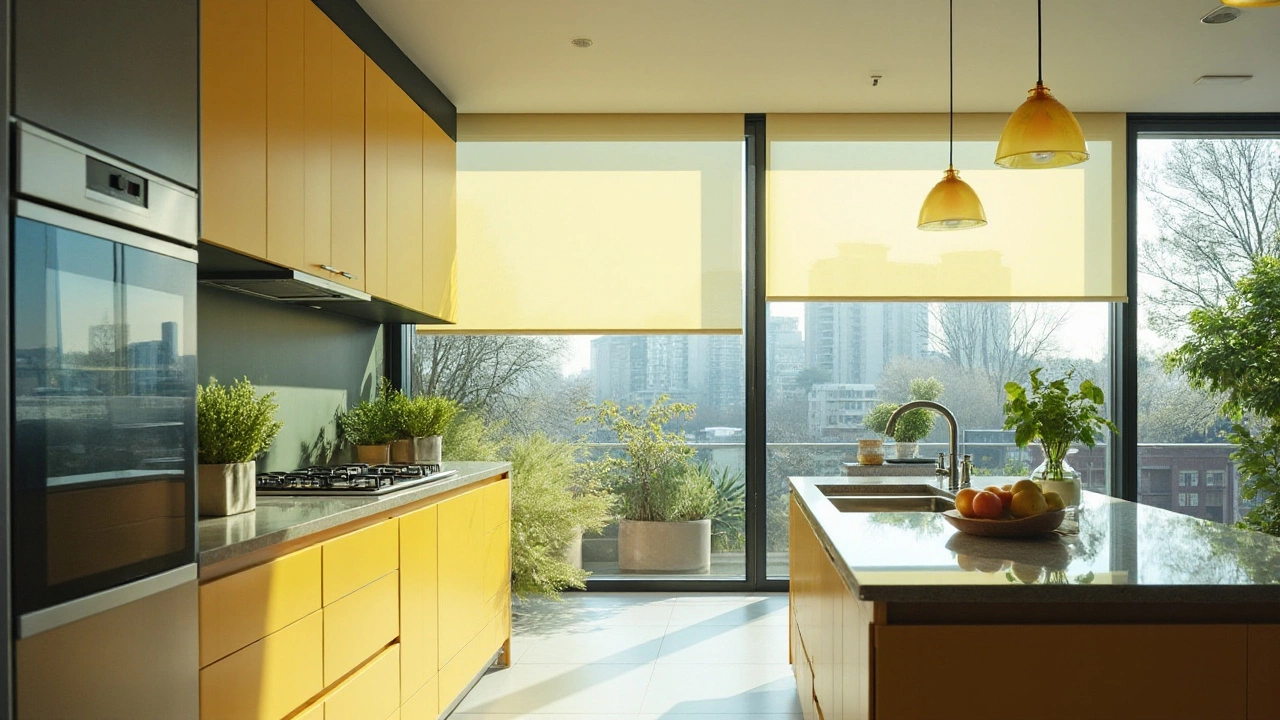
Choosing the Right Covering for Your Home
When it comes to selecting window coverings, the array of choices can be both exciting and overwhelming. With blinds slowly slipping out of vogue, homeowners are turning to more innovative solutions. Choosing window coverings that align with your style, functional needs, and environmental goals involves navigating through a variety of options, each with its unique flair and benefits. The first step is understanding the aesthetic impact of different coverings: while blinds offer neatness and minimalism, alternatives such as curtains and shades can bring a softer, more versatile look. Curtains, in particular, come in an endless palette of colors and patterns, allowing homeowners to tailor their appearance to any room—from a sophisticated living space to a cozy bedroom retreat.
A practical consideration in selecting the right window treatment is the amount of light you wish to let in. Unlike the rigid structure of traditional blinds, curtains provide flexible options for light control. Sheer fabrics offer a dreamy diffused light during the day, while blackout options ensure undisturbed sleep at night. Additionally, for those desiring privacy without sacrificing daylight, layered treatments are a clever answer—they enable light filtration while adding depth and texture to your space. Embracing technological advances, some modern window coverings come with smart features—automated shades that adjust according to the sun's position or can be controlled via smartphone are gaining popularity among tech-savvy homeowners.
Beyond aesthetics and functionality, sustainability is playing an increasingly vital role in decision-making. Eco-friendly materials are not just buzzwords; they represent a commitment to conservation. Many now favor coverings made from sustainable materials like bamboo or organic cotton, reducing environmental impact. These natural materials not only contribute to a greener planet but also add an earthy, organic feel to home interiors. Moreover, energy efficiency is another compelling factor. Choosing insulating window treatments, such as thermal curtains, can significantly cut down on energy bills by maintaining indoor temperatures throughout the seasons.
"It's not just about covering a window; it's about creating an environment that reflects personal style and values," says interior designer Simone Hurst, highlighting the holistic approach one should take when selecting window treatments.Price is yet another facet worthy of consideration. While high-end luxury window treatments can come with a hefty price tag, many affordable options exist that do not compromise on style or quality. Budget-conscious homeowners can experiment with DIY projects, adding personal elements that turn ordinary coverings into bespoke decor features. A curated selection of materials—coupled with a bit of creativity—can transform even the simplest fabric into an elegant piece. Thus, when choosing the right window covering, consider what resonates most with your lifestyle, vision, and practical needs, ensuring the final decision contributes to both beauty and functionality in your space.
